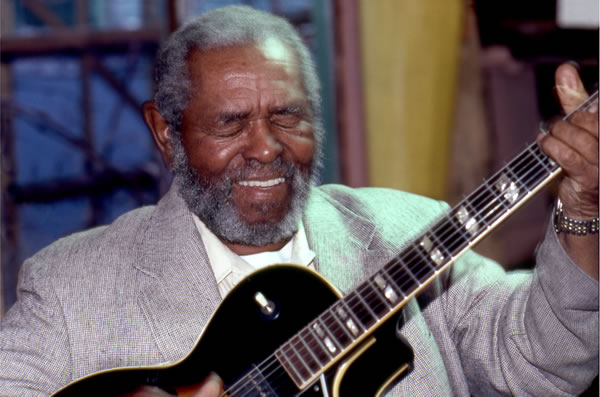Brownie McGhee was more than just a gifted guitarist and singer—he was a pivotal figure in the development of the Piedmont blues style and a tireless ambassador for traditional blues music throughout the 20th century. Best known for his long and fruitful partnership with harmonica player Sonny Terry, McGhee left a deep mark on American roots music. Here are five fascinating curiosities about this blues legend.
1. His Polio Diagnosis Shaped His Musical Path
At the age of four, Brownie McGhee contracted polio, which left his right leg permanently paralyzed. Though a serious setback, it proved to be a turning point that directed him toward music. During his long recovery, he learned to play the guitar, an activity that didn’t require mobility. The illness ultimately became a blessing in disguise, allowing him to channel his energy into mastering the blues.
2. He Was a Key Figure in the Piedmont Blues Style
McGhee’s fingerpicking guitar technique is a hallmark of the Piedmont blues, a regional style originating from the Southeastern United States. Unlike the more raw and rhythmic Delta blues, the Piedmont style is lighter, with intricate, ragtime-influenced picking patterns. McGhee helped bring this style to broader audiences, particularly during the folk revival of the 1950s and 60s.
3. A Legendary Musical Duo: Brownie McGhee & Sonny Terry
Perhaps the most defining chapter of McGhee’s career was his decades-long collaboration with blind harmonica virtuoso Sonny Terry. The two met in 1941 and became one of the most beloved duos in blues history. Their chemistry on stage was electric, blending guitar and harmonica into a seamless musical conversation. They performed together for over 30 years and were instrumental in introducing traditional blues to new generations.
4. He Crossed Over into Acting
In addition to his music career, Brownie McGhee also tried his hand at acting. He appeared in several film and television roles, most notably in the 1986 movie Angel Heart, where he played a bluesman named Toots Sweet. His presence on screen brought authenticity to roles that called for a true blues spirit, showing the range of his artistic talent beyond music.
5. He Was a Mentor to the Next Generation of Blues Artists
Brownie McGhee was not only a performer but also a teacher and mentor. During the blues and folk revival, he influenced a younger generation of musicians, including folk and rock artists who sought to learn from the blues masters. His openness to collaboration helped bridge the gap between traditional blues and contemporary music movements.
Conclusion
Brownie McGhee’s legacy lives on in his recordings, performances, and the many artists he inspired. From overcoming personal hardship to becoming an ambassador for a unique style of blues, McGhee’s story is a testament to resilience and musical passion. Whether through his solo work or his famous partnership with Sonny Terry, Brownie McGhee continues to echo through the chords of American music.


No responses yet